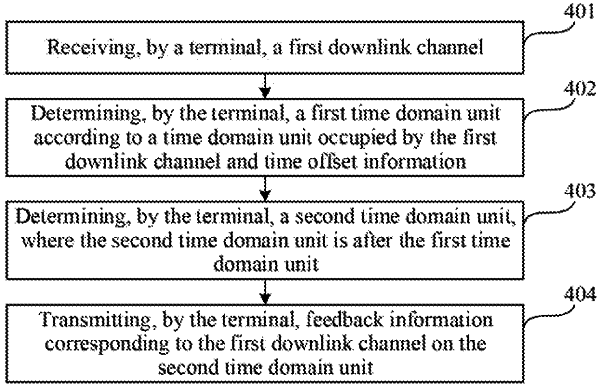| CPC H04W 72/0446 (2013.01) [H04W 72/20 (2023.01)] | 17 Claims |

|
1. An information sending method, comprising:
receiving, by a terminal, a first downlink channel, wherein the first downlink channel is a semi-persistent scheduling physical downlink shared channel (SPS PDSCH);
determining, by the terminal, a first time domain unit according to a time domain unit occupied by the first downlink channel and time offset information;
determining, by the terminal, a second time domain unit according to an uplink channel time domain resource, if the first time domain unit is unavailable for transmitting feedback information corresponding to the first downlink channel, wherein the second time domain unit is after the first time domain unit; and
transmitting, by the terminal, feedback information corresponding to the first downlink channel on the second time domain unit;
wherein the determining, by the terminal, the second time domain unit according to the uplink channel time domain resource comprises:
if a first target time domain unit satisfies a constraint condition of a first uplink channel time domain resource, determining, by the terminal, that the first target time domain unit is the second time domain unit, wherein the first target time domain unit is after the first time domain unit;
wherein the constraint condition of the first uplink channel time domain resource comprises:
in the first target time domain unit, a time domain subunit corresponding to the first uplink channel time domain resource does not comprise a downlink subunit; wherein the downlink subunit refers to a time domain subunit used for downlink transmission.
|